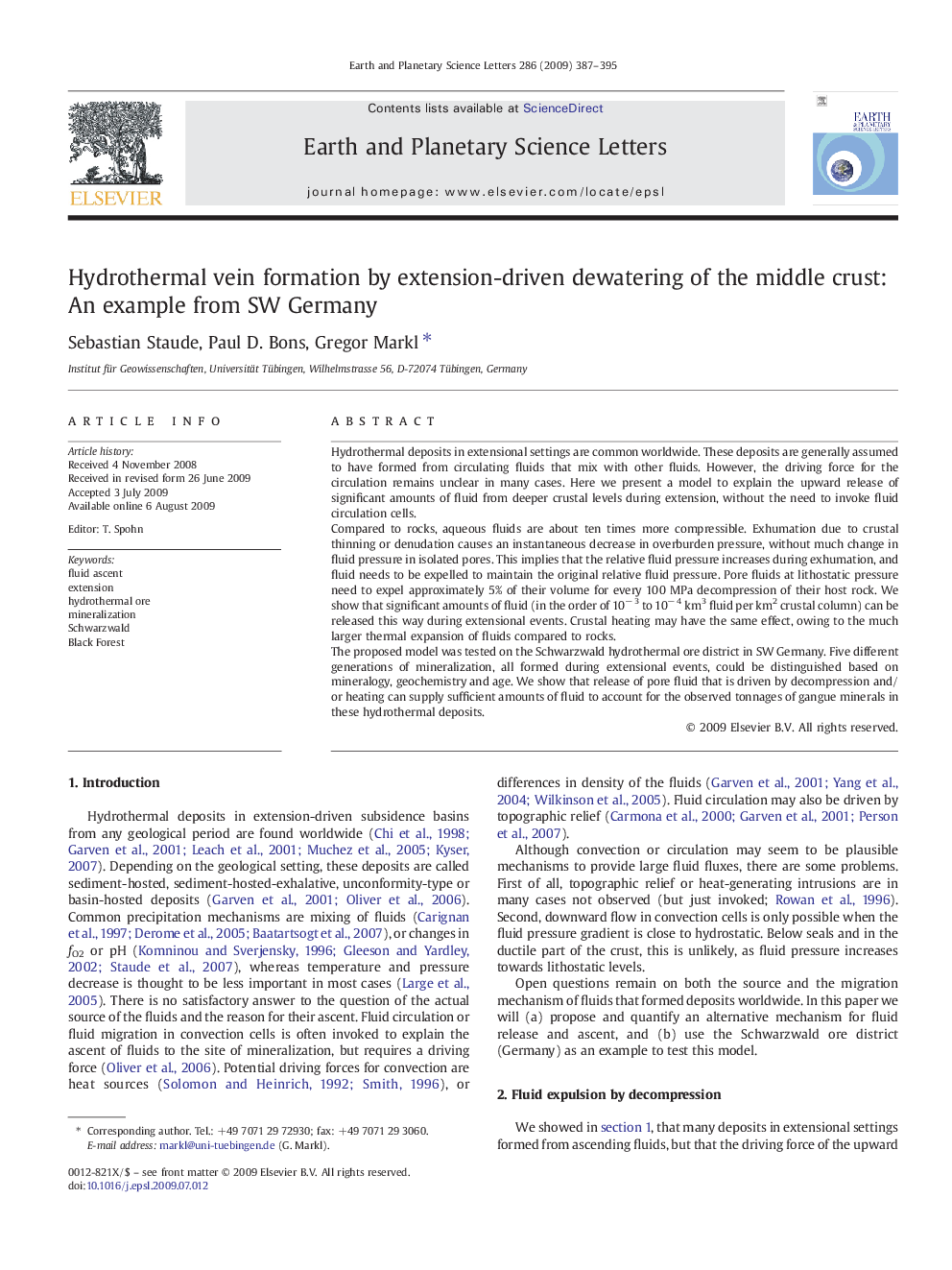| Article ID | Journal | Published Year | Pages | File Type |
|---|---|---|---|---|
| 4679117 | Earth and Planetary Science Letters | 2009 | 9 Pages |
Hydrothermal deposits in extensional settings are common worldwide. These deposits are generally assumed to have formed from circulating fluids that mix with other fluids. However, the driving force for the circulation remains unclear in many cases. Here we present a model to explain the upward release of significant amounts of fluid from deeper crustal levels during extension, without the need to invoke fluid circulation cells.Compared to rocks, aqueous fluids are about ten times more compressible. Exhumation due to crustal thinning or denudation causes an instantaneous decrease in overburden pressure, without much change in fluid pressure in isolated pores. This implies that the relative fluid pressure increases during exhumation, and fluid needs to be expelled to maintain the original relative fluid pressure. Pore fluids at lithostatic pressure need to expel approximately 5% of their volume for every 100 MPa decompression of their host rock. We show that significant amounts of fluid (in the order of 10− 3 to 10− 4 km3 fluid per km2 crustal column) can be released this way during extensional events. Crustal heating may have the same effect, owing to the much larger thermal expansion of fluids compared to rocks.The proposed model was tested on the Schwarzwald hydrothermal ore district in SW Germany. Five different generations of mineralization, all formed during extensional events, could be distinguished based on mineralogy, geochemistry and age. We show that release of pore fluid that is driven by decompression and/or heating can supply sufficient amounts of fluid to account for the observed tonnages of gangue minerals in these hydrothermal deposits.
